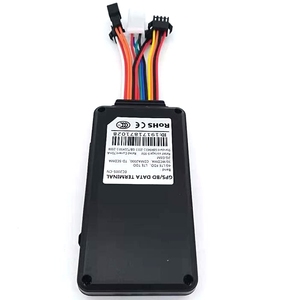
All categories
Featured selections
Trade Assurance
Buyer Central
Help Center
Get the app
Become a supplier

(20921 products available)



















































Video buses transport and include specialized buses outfitted for live video production, as well as video production buses for remote video production. The video production bus for remote video production can be further divided into mobile units and mobile production units.
Mobile units
Mobile units are designed for video production on the go. They are equipped with advanced technology for high-quality video capture, mixing, and transmission in various locations. Mobile units are crucial for events like sports, concerts, and news coverage where real-time video production is essential. Their mobility ensures that high production standards are maintained, regardless of the event's location.
Mobile production units
Mobile production units are specialized vehicles designed to provide comprehensive video production services in a mobile setting. Equipped with advanced technology and facilities, these units can handle live events, pre-recorded shows, and on-site editing, ensuring high production quality and flexibility. Their mobility allows access to various locations, making them ideal for events requiring real-time video coverage and professional production expertise.
Video bus specifications vary depending on the model. However, here are some general specifications:
Video buses require regular maintenance to ensure optimal performance and reliability. Here are some maintenance tips:
Choosing the right video bus for a project requires careful consideration of various factors to ensure optimal performance, reliability, and compatibility. Here are some key considerations:
Bandwidth and Capacity
When selecting a video bus, it is essential to analyze the bandwidth capabilities to ensure it can handle the data requirements. The bandwidth needs to be sufficient to accommodate the video signals without compromising quality or causing delays. In addition, the capacity should be analyzed to ensure it can manage the number of connected devices and video streams.
Compatibility
Compatibility is vital when selecting a video bus system. Ensure the video bus is compatible with the devices and protocols of the existing system. This compatibility enables seamless communication and integration, thus eliminating the need for additional converters or interfaces.
Scalability
Consider the scalability of the video bus for future expansions or upgrades. Select a video bus that can be easily scaled to accommodate additional devices or increased bandwidth requirements. This scalability ensures that the video bus can adapt to future technological advancements and changing needs.
Reliability and Redundancy
Reliability is vital for critical video applications. Select a video bus with redundant features and high availability to minimize downtime. In addition, consider the error correction and recovery mechanisms that ensure reliable data transmission even in challenging environments.
Latency
Latency is another important factor to consider when choosing a video bus. High latency can cause delays in video transmission, which can be detrimental in live events or real-time monitoring. Select a video bus designed for low latency to ensure instant video delivery and responsiveness.
Quality of Service (QoS)
Quality of Service (QoS) is critical for maintaining video quality in congested networks. Select a video bus with QoS features such as bandwidth allocation, priority traffic, and traffic shaping. These features ensure that video streams receive the necessary resources and priority, thus maintaining consistent quality.
Ease of Installation and Maintenance
Consider the installation and maintenance requirements of the chosen video bus. Select a bus system that is easy to install, configure, and maintain. This simplicity reduces downtime and ensures smooth operation. In addition, consider the availability of diagnostic tools and monitoring features that facilitate troubleshooting and preventive maintenance.
Cost
Cost is also an essential aspect of choosing a video bus. Thus, selecting a video bus that fits the budget while meeting the project's requirements is vital. Consider the total cost of ownership, including installation, maintenance, and scalability, in addition to the initial cost.
Replacing a video bus can be a bit technical, but with the right tools and knowledge, it can be done. Here are the steps:
Tools needed:
Step-by-step guide:
Once the steps are done, the new video bus is installed and ready to use. Remember to double-check all connections and settings before turning the power back on.
Q1: How long do video buses last?
A1: The longevity of a video bus depends on various factors, including the quality of the bus, frequency of use, maintenance, and environmental conditions. Generally, a well-maintained video bus can last between 5 to 10 years.
Q2: Can video buses be used for outdoor events?
A2: Yes, video buses are designed for outdoor events. They are equipped with outdoor-rated screens and sound systems, ensuring excellent performance in various weather conditions.
Q3: Are video buses accessible for individuals with disabilities?
A3: Many video buses are equipped with accessibility features such as ramps, wheelchair lifts, and designated spaces for wheelchairs. It is essential to check with the service provider regarding accessibility options.
Q4: Can the content shown on a video bus be changed during the event?
A4: Yes, the content can be changed in real time. The event's technical team controls the video bus's broadcast schedule, allowing for flexibility and adjustments as needed.
Q5: How is the video bus powered?
A5: The video bus is powered by the event's electrical supply. In cases where there is limited access to electricity, the video bus is equipped with generators to ensure adequate power for all systems.